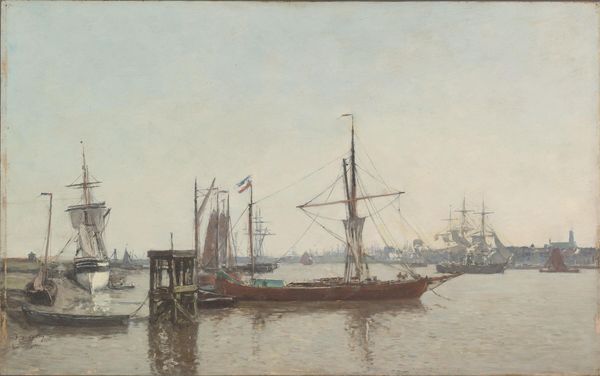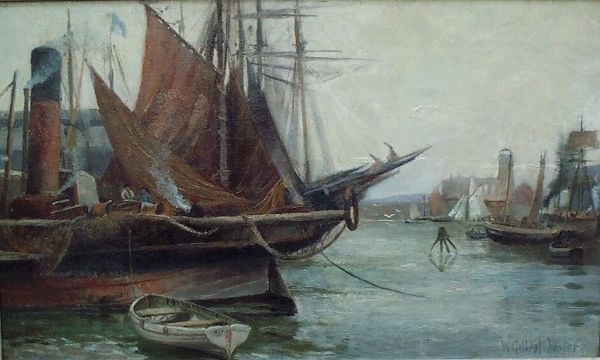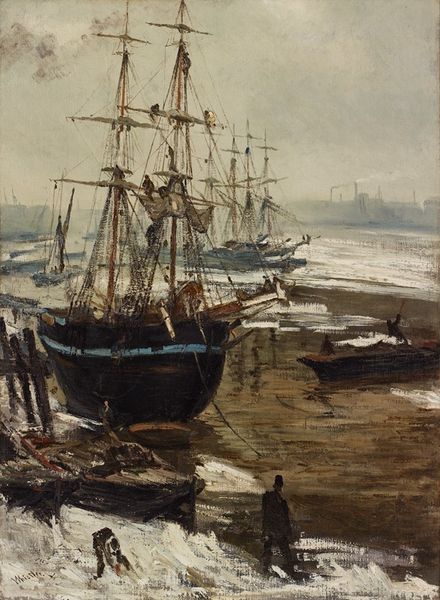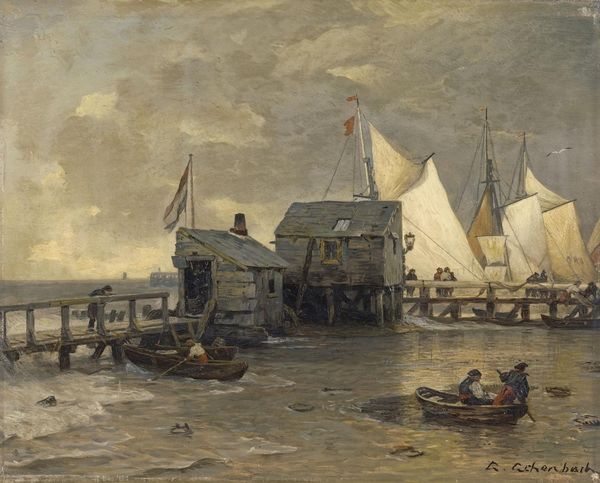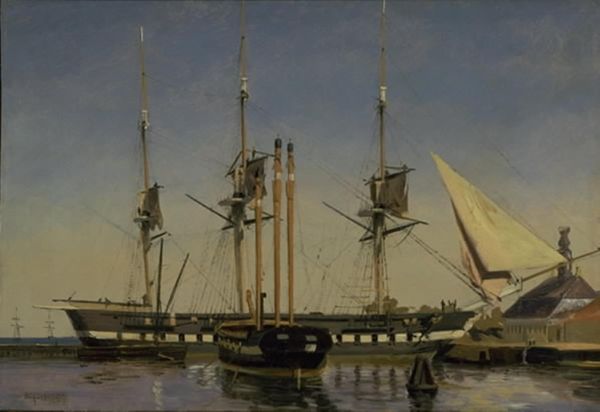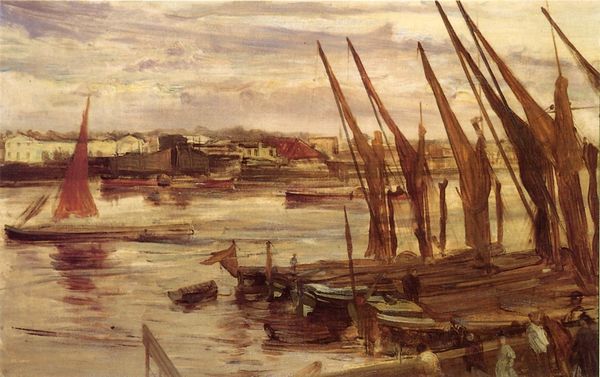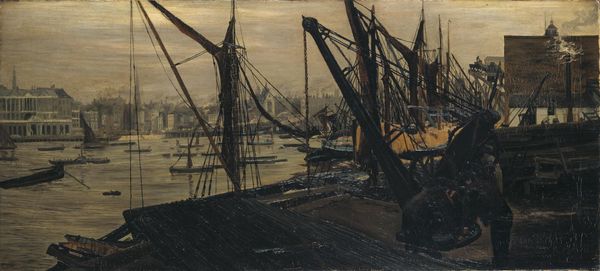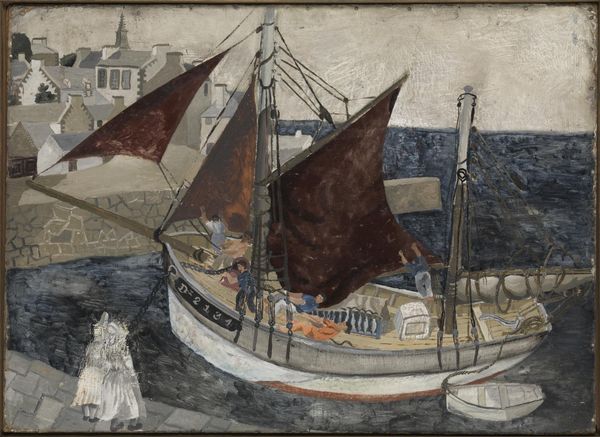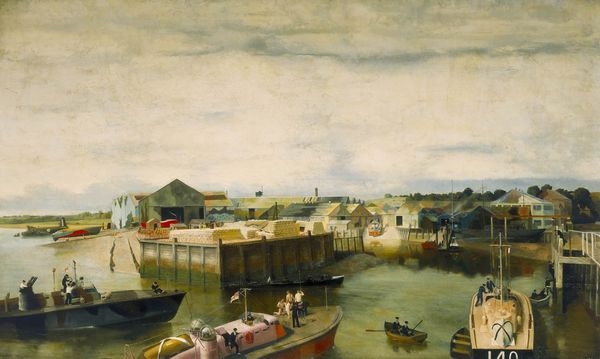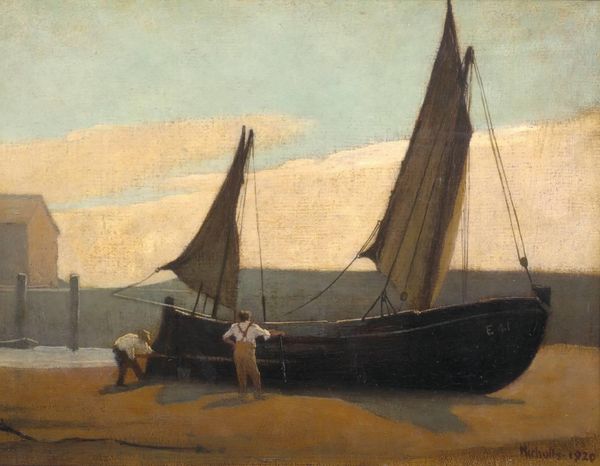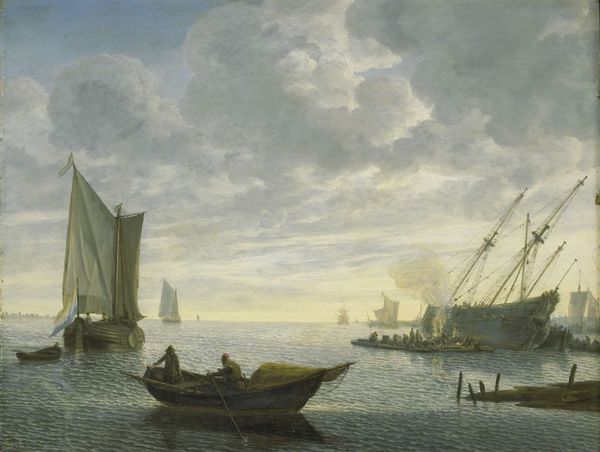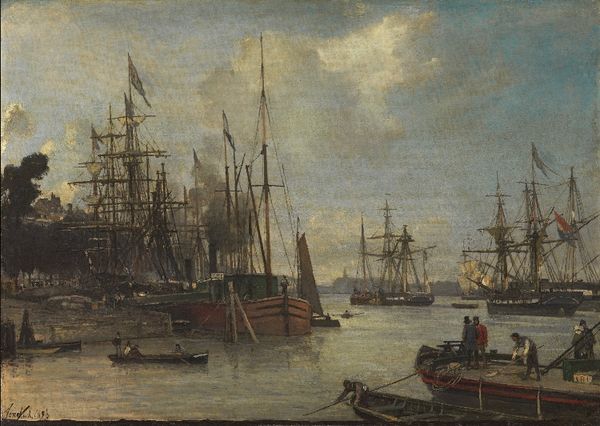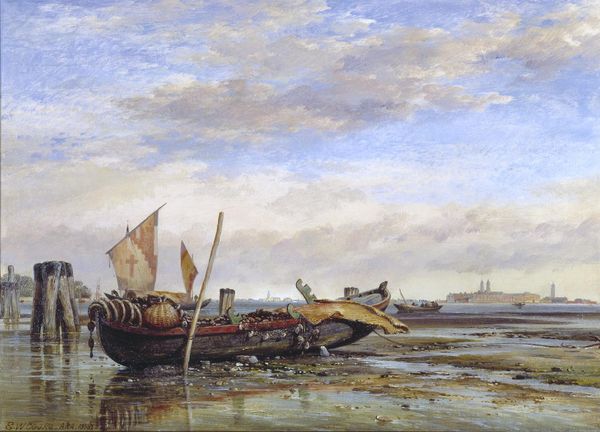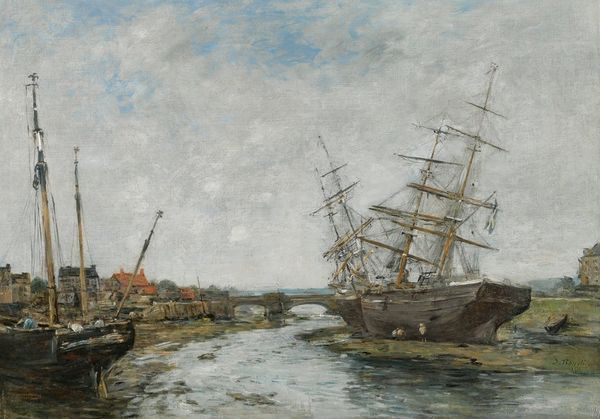
Dimensions: support: 641 x 768 mm frame: 888 x 1016 x 66 mm
Copyright: CC-BY-NC-ND 4.0 DEED, Photo: Tate
Editor: Here we have Walter Greaves' "Battersea Reach," a lovely, muted oil on canvas. I'm struck by how much it focuses on the working river, the boats and docks. What can you tell me about this painting? Curator: The piece foregrounds the means of production and labor intrinsic to London’s river economy. Note the raw materials piled on the barges, the figures engaged in unseen tasks. Greaves isn't just depicting a scene, but presenting a system of labor and material exchange. It asks us to consider the social context of this industry. What is being transported and for whom? Editor: That's fascinating. I hadn't thought about it that way. Thanks for pointing that out. Curator: It shifts the focus from the aesthetic beauty of the Thames to the social and economic forces at play. Editor: I’ll definitely look at it differently now.
Comments
tate 7 months ago
⋮
http://www.tate.org.uk/art/artworks/greaves-battersea-reach-n05216
Join the conversation
Join millions of artists and users on Artera today and experience the ultimate creative platform.
tate 7 months ago
⋮
In the 19th century the waterfront at Chelsea, London was busy with barges and steamboats. Greaves painted this stretch of the river Thames several times. Here he includes the steeple of St Mary’s Church, Battersea.Greaves was the son of a Chelsea boat-builder. He met the artist James Abbott McNeill Whistler in 1863 and they became close friends. Whistler frequently went out on the family’s boats to paint river scenes. Greaves said ‘Chelsea was so beautiful that you couldn’t but paint it. To Mr Whistler, a boat was always a tone. To me, it was just a boat’. Gallery label, April 2019
